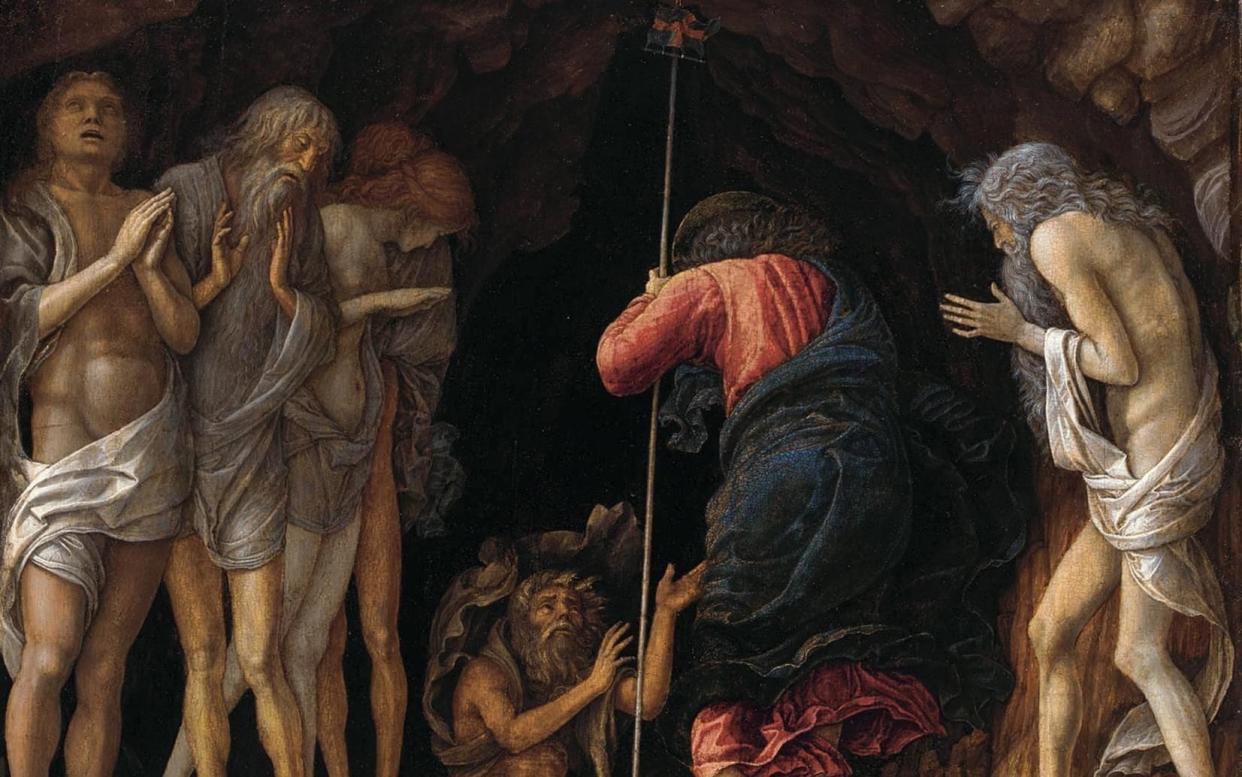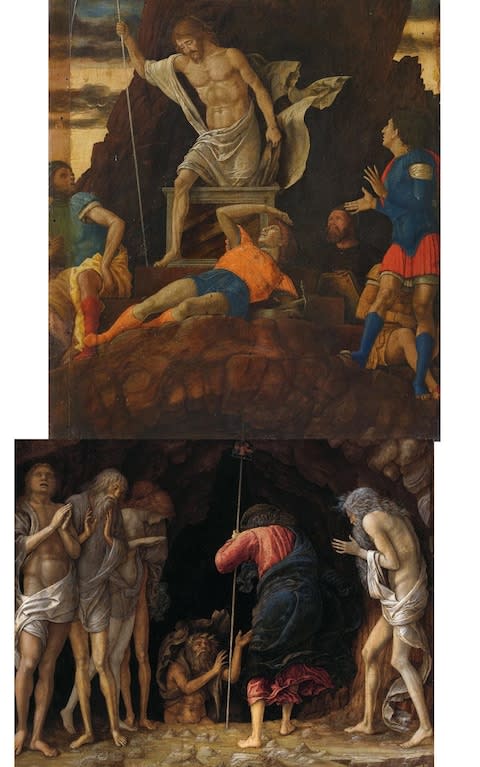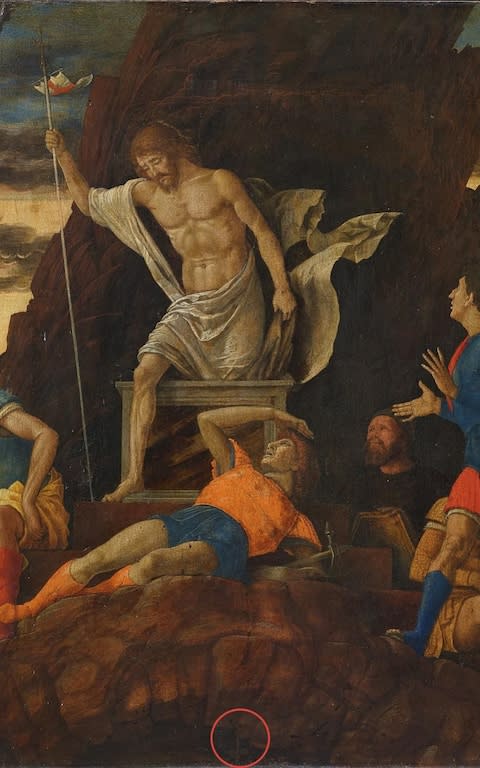Tiny cross provides clue that reunites Renaissance masterpiece with its other half

A tiny golden cross provided the clue that enabled art historians to piece together two halves of an oil painting by an Italian Renaissance master, in a discovery that has multiplied by 1,000 times the value of one of the pieces.
One half of the oil painting, entitled “The Resurrection of Christ”, had been kept in a museum storeroom in Bergamo, northern Italy, for more than a century.
It was considered to be a copy of the work of Renaissance painter Andrea Mantegna, or at best a painting produced by his son.
But an Italian art historian noticed, at the bottom of the painting, the faint outline of a golden cross, and begun to suspect that it was not only a genuine Mantegna but part of a larger painting.

Giovanni Valagussa, the museum’s curator, discovered that the barely-visible cross at the base of the painting matched a staff held by a figure in an acknowledged Mantegna work, “Descent into Limbo”, completed in 1493.
That work sold to a private buyer at Sotheby’s in New York in 2003 for more than $28 million.
Further backing up his hunch, Prof Valagussa noticed that a rocky arch in the Resurrection painting matched stonework and the interior of a cave in the Limbo painting.
He realised that the two had once been part of a single work which had been cut in two, as sometimes happened to paintings in the Renaissance era.
“This has been a compelling story of attribution, which retraced all the hypotheses and work of past centuries,” said Prof Valagussa. “It restores to the world of culture a great masterpiece. It is the most important discovery relating to Mantegna in 30 years.”
The linking of the two works means that the top Resurrection panel, newly attributed to Mantegna, is likely to be worth $28-$30 million.

While kept in storage in Bergamo’s Accademia di Carrara, it had been insured for €20,000-30,000 – meaning that it is now worth about 1,000 times more than was previously thought.
The new attribution has been confirmed by Dr Keith Christiansen of the Metropolitan Museum of Art in New York, the world’s foremost expert on Mantegna.
He described the Resurrection painting as “an absolutely top-quality work by one of the defining artists of the early Renaissance.”
Italian experts are now restoring the newly-attributed panel, removing centuries of grime and bringing out the original colours of the painting, which shows Roman soldiers looking astounded by Christ’s resurrection.
Whether the two pieces will ever be reunited in a gallery or museum remains uncertain – the private buyer of the lower, Limbo half is said to be reluctant to allow it out of his hands.
“We’d love to bring the two pieces together after all these centuries of separation and organise an exhibition. We’re hoping to trace the collector,” said Prof Valagussa.
Mantegna was born around 1431 in the village of Isola di Carturo near Padua in northern Italy.
At the age of 10 he was apprenticed to a painter, Francesco Squarcione, who later adopted him.
He then established his own studio and spent much of his life in the city of Mantua, where he died in 1506.

 Yahoo News
Yahoo News 
